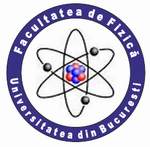| |
 |
UNIVERSITY OF BUCHAREST
FACULTY OF PHYSICS Guest
2025-10-05 22:27 |
 |
|
|
|
Conference: Bucharest University Faculty of Physics 2025 Meeting
Section: Physics and Technology of Renewable and Alternative Energy Sources
Title:
Ecological syntesis of CuONPs based on aqueous herbal extract
Authors:
Alexandra SISILICA (1), Bogdan Ciprian MITREA (2),Tom Matei IACOB (2), Cornelia NICHITA (2,3), Marcela-Elisabeta BARBINTA-PATRASCU (1), Ioan STAMATIN (2)
*
Affiliation:
1) Department of Electricity, Solid-State Physics and Biophysics, Faculty of Physics, University of Bucharest, 405 Atomistilor Street, P.O. Box MG-11, 077125 Magurele, Romania
2) University of Bucharest, Faculty of Physics, ICUB, CTT 3Nano-SAE Research Center, MG-38, 405 Atomistilor Street, 077125, Magurele, Romania
3) National Institute for Chemical – Pharmaceutical Research and Development, 112 Vitan Avenue, 031299, Bucharest, Romania
E-mail
cornelia.nichita@unibuc.ro, cornelia@3nanosae.org
Keywords:
copper oxide nanoparticles, phytosynthesis, Menta piperita L, urease activity
Abstract:
In the current context of environmental pollution, the ˮgreenˮ approaches for nanoparticles' synthesis are of great interest today. The present study describes an eco-friendly strategy to develop copper oxide nanoparticles (CuO NPs) by using an aqueous extract of mint (Menta piperita L.) leaves. The synthesis of mint-derived CuO NPs was confirmed by UV-Vis absorption spectroscopy. Their dimensions have been estimated by Dynamic Light Scattering, and their physical stability by zeta potential measurements. The total polyphenol content was evaluated by Folin-Ciocalteu assay and the antioxidant properties by chemiluminescence technique. The phytosynthesized CuO NPs showed urease inhibitory activity (estimated by conductometric assay). The evaluation of the eco-impact of the obtained phytogenic CuO NPs was carried out on Basil (Ocimum basilicum L.) for the purpose of the wastewater treatment applications.
Acknowledgement:
The authors would like to thank the European Commission and CNCS/CCCDI-UEFISCDI for funding in the frame of the collaborative international consortium WaterGreenTreat financed under the 2022 Joint call of the European Partnership 101060874 — Water4All. This work was supported by a grant of the Ministry of Research, Innovation and Digitization, CNCS/CCCDI - UEFISCDI, project number COFUND-WATER4ALL-WATER Green Treat-1, No. 59/2024, within PNCDI IV.
|
|
|
|